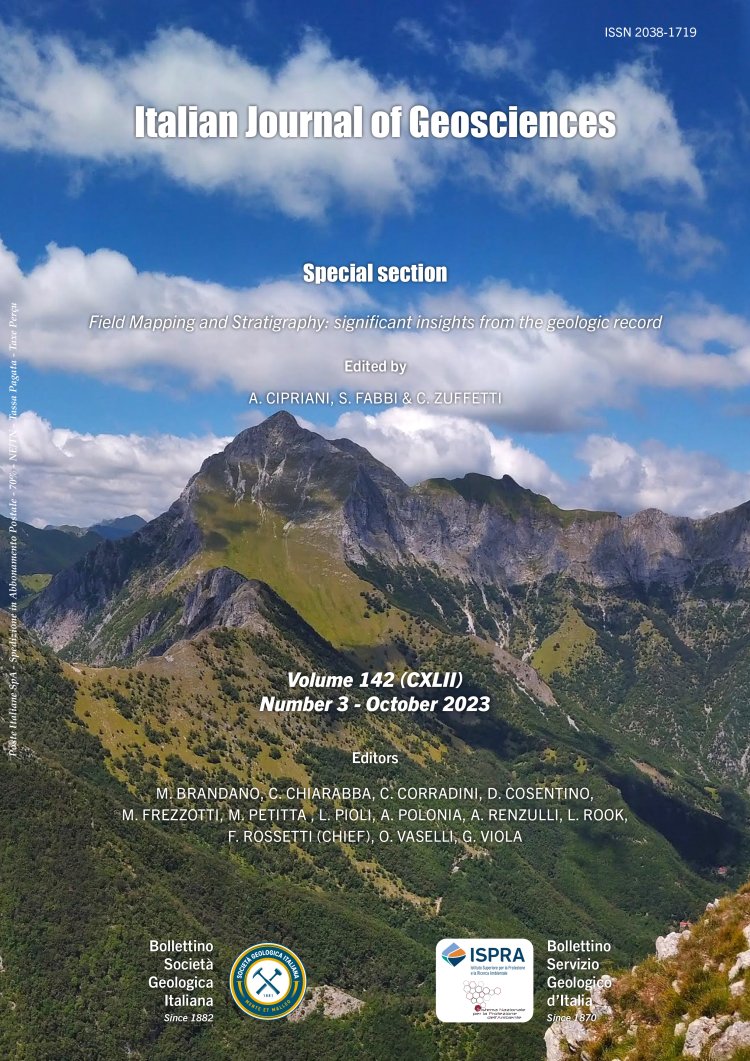

Geological map, balanced and restored cross-sections, and 3D geological model of the Monte Fema area, Umbria-Marche Apennines (Italy)
Matteo Basilici1,2, Matteo Pedini1, Alessandro Spinaci1, Leonardo Del Sole1,3, Danica Jablonskà1, Franco Capotorti4, Stefano Mazzoli1 & Pietro Paolo Pierantoni1
1 School of Science and Technology, Geology Division, University of Camerino, 62032 Camerino, Italy.
2 Department of Geosciences, University of Fribourg, 1700 Fribourg, Switzerland.
3 Istituto Nazionale di Geofisica e Vulcanologia, Sezione di Sismologia e Tettonofisica, 62032 Camerino, Italy.
4 Istituto Superiore per la Protezione e la Ricerca Ambientale, Dip. Servizio Geologico d’Italia, 00144 Roma, Italy.
Corresponding author e-mail: matteo.pedini@unicam.it
Volume: 142 (2023) f.3
Pages: 339-358
Abstract
The Mt. Fema area is located within the 1:50,000 scale Sheet 325-Visso of the CARG project, in the Umbria- Marche Apennines. Here, inherited pre-orogenic deformation and multi-layered mechanical stratigraphy affect mountain belt evolution and cause along- and across-strike changes in structural architecture. Further complexity is caused by post-orogenic extensional tectonics dissecting the fold and thrust belt. In this work, we combined classical field methodologies with digital mapping and drone surveys to produce a 1:10,000 geological map of the Mt. Fema area. The resulting map was integrated with a 10 m-cell size DEM in a 3D environment to construct four balanced cross-sections that were used to document structural style and stratigraphic variations. One section was restored to quantify the amount of deformation related to both Neogene orogenic shortening and multiple extensional phases affecting the area. Ultimately, we built a 3D geological model to investigate the subsurface geometrical arrangement of strata and faults of different generations, thus the overall structural architecture of the fold and thrust belt. According to our interpretation, the Mt. Fema thrust system is characterized by relatively limited displacement (cumulative dip separation ranging from ~100 m to the north in Val di Tazza to ~500 m to the south in Valnerina). Reactivation of inherited normal faults was likely precluded because of their unfavourable orientation with respect to W-dipping thrusts. Inherited basin structure and mechanical stratigraphy govern folding by buckling mechanism, which in turn controls the locus of thrust propagation. Normal faults dissect the crestal region of the Mt. Fema anticline. These structures do not show evidence of surface faulting during recent seismic sequences, although earthquake epicentres fall within the study area. Our work provides new insights into the 3D structural architecture, timing, and kinematics of a key sector of the Umbria-Marche Apennines, with implications for a better understanding of the role of structural inheritance and subsequent extensional tectonics in the evolution of fold and thrust belts.
Keywords
balanced geological sections, fold and thrust belts, 3D model, Northern Apennines, extensional faulting.
Get Full Text Supplementary Material